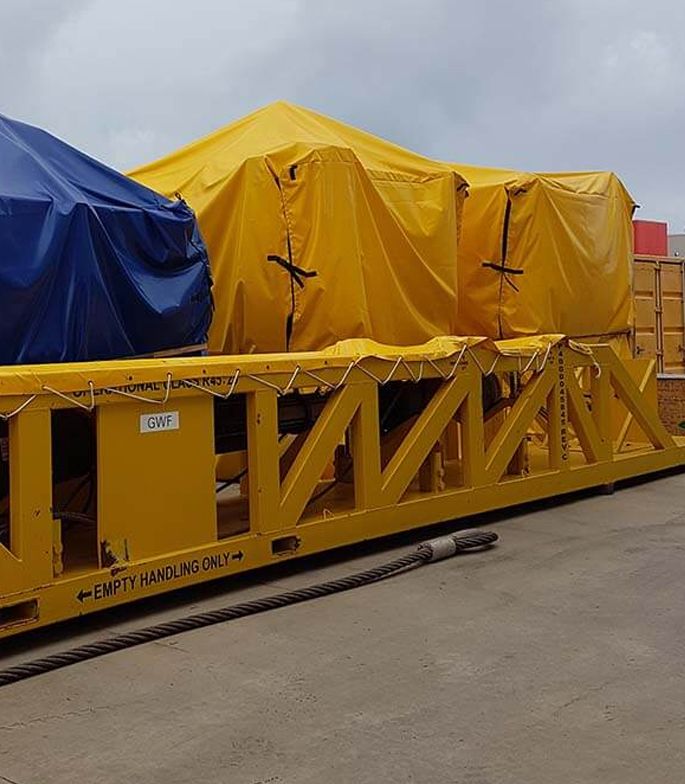Safety in the Road Freight Transport Industry

The road freight transport industry in Australia is a high-risk industry that faces a number of unique work health and safety challenges.
Understanding the inherent risks is crucial for developing strategies to improve safety in the road freight industry, minimize the number of work-related fatalities and reduce the impact on the long-term health of workers.
Manual tasks and handling freight
Workers in the road transport industry are often required to perform a number of physically demanding manual tasks when handling freight. These include things like:
- lifting heavy loads
- maintaining an awkward or unnatural posture while lifting or carrying items
- performing repeated actions for a long period of time without rest
- using inappropriate equipment for the task
According to Safe Network NSW, manual handling tasks are responsible for 30% of the industry’s injuries.
Ways to reduce potential hazards
Manufacturers, transport operators, and businesses where the freight is loaded or unloaded must all work together to improve health outcomes for the workers.
Solutions to minimize manual handling injuries include:
- Ensuring the correct equipment is provided reduces the amount of lifting and handling that workers have to do.
- Changing the size, shape, and weight of packages to optimize them for safe loading and unloading.
- Reducing the distance between the unloading site and drop-off site, and the pickup site and loading site.
- Providing training and education about correct handling techniques and long-term health outcomes.
Falls from a height
A number of injuries every year in the road freight transport industry occur from falls from a height, such as from the cabin, tray, or trailer.
These injuries are more likely to occur during times of entering and exiting the vehicle, loading and unloading freight, securing tarps, and when the weather is wet.
Reducing the risk of falls
There are a number of solutions that can help minimize the risk of falls from a height, including:
- Improving access to the cabin by ensuring there are appropriate steps, handrails, lighting, and nonslip surfaces.
- Installing fall protection measures such as guard rails, temporary work platforms, and fall arrest systems.
- Reviewing and reducing the number of tasks that need to be done at a height. Also, reducing the amount of time that needs to be spent at a height.
- Ensuring truck drivers are equipped with mobile phones or satellite phones as appropriate so that they can call for help if needed.
Traffic management
When unloading and loading occurs, workers are at risk of being hit by passing vehicles, including forklifts and trucks, as well as falling loads.
Solutions include:
- Restricting when and where certain types of vehicles are allowed access during loading and unloading times.
- Putting safety procedures in place such as wearing high visibility clothing while on site.
- Providing crucial information to truck drivers to ensure they are aware of the correct procedures.
- Using barriers, signs, lights, and traffic cones when delivering on road.
- Creating an exclusion zone around trucks where only pedestrians are allowed to move through.
Securing loads
Securing loads correctly is an essential component of safety in the road freight transport industry. Loads that are not secured properly present a risk not only for the driver but also for the other road users.
Workers face a number of risks when securing loads. Injuries most often occur when handling side gates and curtains, tensioning devices, and corner protectors.
Solutions include:
- Custom designing the heavy vehicle optimally for the specific load it is carrying.
- Practicing regular cleaning and maintenance of rollers.
- Installing automatic curtains.
- Providing safety training on how to correctly handle curtains, gates, lashings, and tensioning devices.
- Avoid using dogs and cheater bars as these have a high incidence of injury.
- Investing in new technologies and equipment designed to maximize safety and prevent injury.
Securing loads correctly with heavy-duty tarps
Investing in high-quality, custom-made transport tarps can help improve safety in the road transport industry and better protect loads.
Roll tarps, fitted tarps, pull-out tarps, and custom covers should be made from highly durable fabrics to ensure they can cope with difficult weather conditions and high levels of wear and stress.
Tarpaulins should be used in conjunction with the safest restraining device for the particular load being transported. Restraint devices and tarpaulin fabrics should be regularly inspected to ensure they are in good working condition.
100% Australian made tarps for Australian conditions
If you’re looking for reliable tarps that can cope with the tough conditions that the road transport industry faces in Australia, give Westarp a call. We specialize in custom-made heavy-duty tarps that empower the road transport industry to maximize safety, productivity, and performance.
We have been certified to international standards for Quality Management and Health and Safety Management – and we’re committed to providing all of our customers with excellent turnaround times and the highest standard of customer services.
Check out our custom tarp process for information about how to place an order. Or get in touch with our friendly experts on (08) 9690 1111 to discuss your needs.




William Snellex (Base Fabrication)